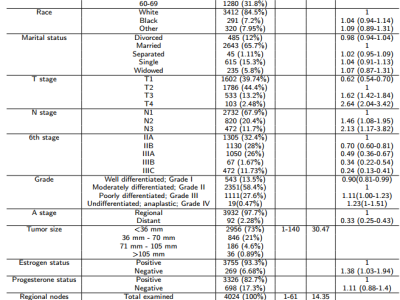In-Vitro Measurements of Porcine Conductive Intracardiac Channel Properties

- Citation Author(s):
- Submitted by:
- Adrian Ryser
- Last updated:
- DOI:
- 10.21227/c0ew-c088
- Data Format:
 149 views
149 views
- Categories:
Abstract
This dataset contains the raw data of the measurements/simulations presented in "Modulation Scheme Analysis for Low-Power Leadless Pacemaker Synchronization Based on Conductive Intracardiac Communication" by A. Ryser et al. This work analyzed the bit error rate (BER) performance of a prototype dual-chamber leadless pacemaker both in simulation and in-vitro experiments on porcine hearts. The transmitter (TX) and the receiver (RX) were connected to the hearts through epicardial needle electrodes, which were sutured to the right atrium (RA) and the right ventricle (RV), respectively. The dataset contains the measured and simulated BER performance as a function of the transmitted bit-energy for each investigated in-vitro condition. In total 5 porcine heart samples, 3 without and 2 with porcine blood filled into the right side of the heart, were measured. For each sample the BER performance of two low-power modulation schemes (OOK and Manchester-encoded baseband transmission) was compared at four different data rates and three different RV-electrode orientations. In addition, the BER was simulated based on measurements of the intracardiac channel transfer function and the TX/RX inter-electrode impedances. The transfer function and impedance measurements for each investigated in-vitro configuration are also included in the dataset, as well as the results of the corresponding BER simulations. For more details regarding the measurement setup and conditions, the reader is kindly referred to the Methods section of the main publication.
Instructions:
The files for the bit error rate (BER), the impedance (Z) and the transfer function (TXFunc) data can be found in the corresponding sub-folders (see folder structure below). The data for each individual measurement/simulation run have been saved in a separate .csv file with the file name containing the relevant metadata. The first row in each data file lists the reported parameters and the units in camel case format, where the units are specified following the last underscore. The specific format of the file name and the possible metadata values are listed below for each of the three variables (BER, TXFunc and Z).
- File Name Format - BER Measurement/Simulation
- The general structure of the file name is: BER_<SampleNr>_<Channel>_<ModScheme>_<DataRate>_<RVAngle>_<Type>
- <Sample>: 'InVitro1', 'InVitro2', 'InVitro3', 'InVitro4' or 'InVitro5' specifying the sample number.
- <Channel>: 'Tissue' for samples measured without blood and 'TissueBlood' for samples measured with blood filled into the right side of the heart.
- <Angle>: '0deg, '30deg', '60deg' denoting the relative orientation of the RV electrode to the fixed RA electrode.
- <ModScheme>: 'MAN' or 'OOK' denoting whether Manchester-encoded baseband transmission or On-Off-Keying was used as modulation technique, respectively.
- <DataRate>: '75kbps', '150kbps', '300kbps' or '500kbps'
- <Type>: While 'Meas' denotes BER data obtained from measurements, while 'SimEffective' and 'SimEqualized' denote BER data obtained during the effective and the equalized simulations, respectively. For a more detailed explanation of the BER simulations, please consult the Methods section of the main publication.
- File Name Format - TXFunc Measurement
- The general structure of the file name is: TXFunc_<Type>_<SampleNr>_<Channel>_<RVAngle>
- <Type>: 'Raw' denotes the raw measurement data, while 'SimEffective' and 'SimEqualized' denote the transfer function used during the effective and equalized simulations, respectively, which have been corrected at high frequencies to account for loading effects introduced by the measurement setup. For a more detailed explanation of the BER simulations and the correction procedure, please consult the Methods section of the main publication.
- <Sample>: 'InVitro1', 'InVitro2', 'InVitro3', 'InVitro4' or 'InVitro5' specifying the sample number.
- <Channel>: 'Tissue' for samples measured without blood and 'TissueBlood' for samples measured with blood.
- <Angle>: '0deg, '30deg', '60deg' denoting the relative orientation of the RV electrode to the fixed RA electrode.
- File Name Format - Z Measurement
- The general structure of the file name is: Z_<Location>_<SampleNr>_<Channel>_<RVAngle>
- <Location>: 'RA' or 'RV' depending on whether the impedance measurement was taken in the right atrium or the right ventricle, respectively.
- <Sample>: 'InVitro1', 'InVitro2', 'InVitro3', 'InVitro4' or 'InVitro5' specifying the sample number.
- <Channel>: 'Tissue' for samples measured without blood and 'TissueBlood' for samples measured with blood.
- <Angle>: '0deg, '30deg', '60deg' denoting the relative orientation of the RV electrode to the fixed RA electrode.
The dataset is organized according to the following folder structure:
CIC_InVitro_Data_PorcineHeart
+---bit_error_rate
| +---measurement
| | +---75kbps
| | +---150kbps
| | +---300kbps
| | \---500kbps
| +---sim_effective
| | +---75kbps
| | +---150kbps
| | +---300kbps
| | \---500kbps
| \---sim_equalized
| | +---75kbps
| | +---150kbps
| | +---300kbps
| | \---500kbps
+---impedance
| +---right_atrium
| \---right_ventricle
\---transfer_function
+---raw_data
+---sim_effective
\---sim_equalized






